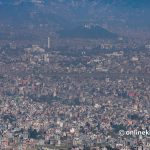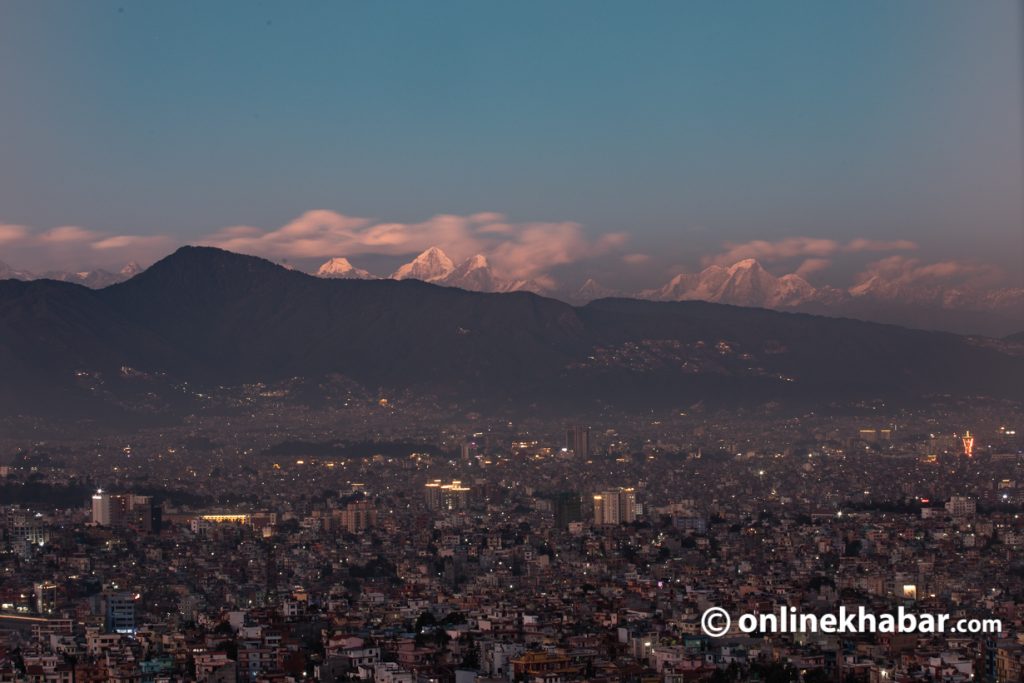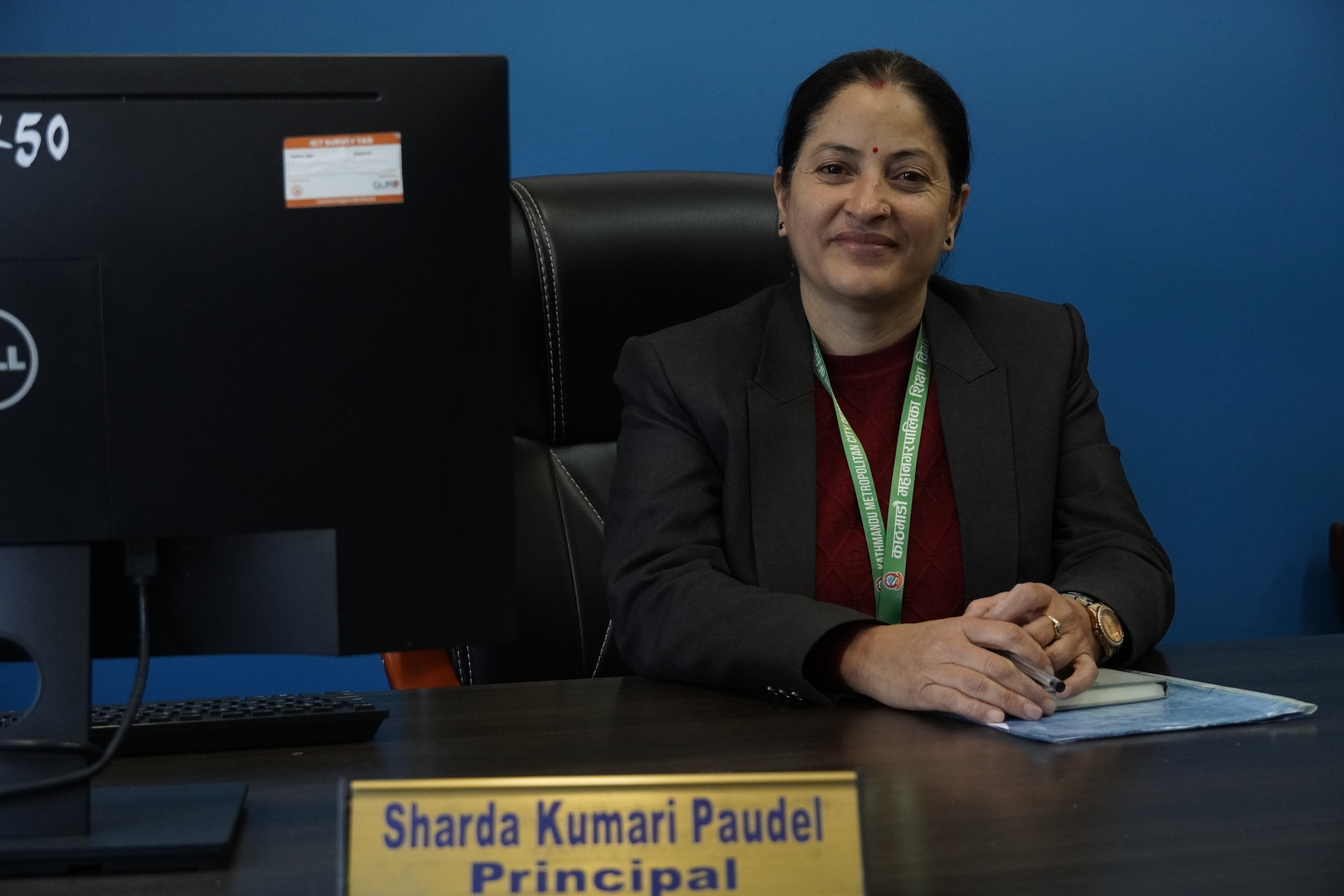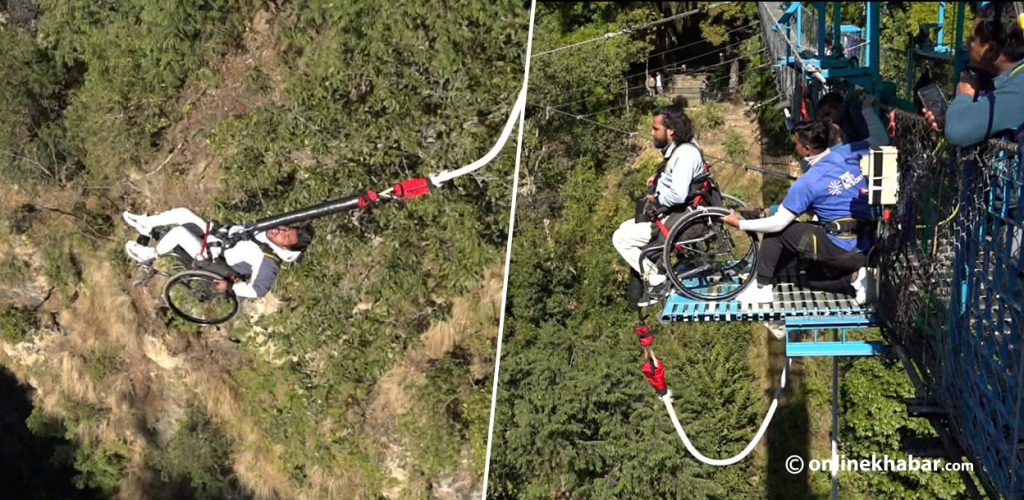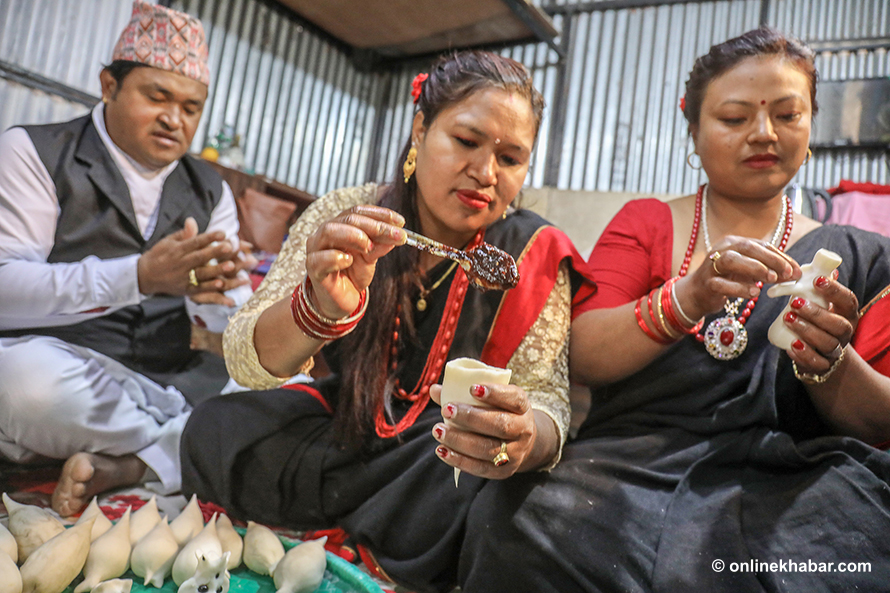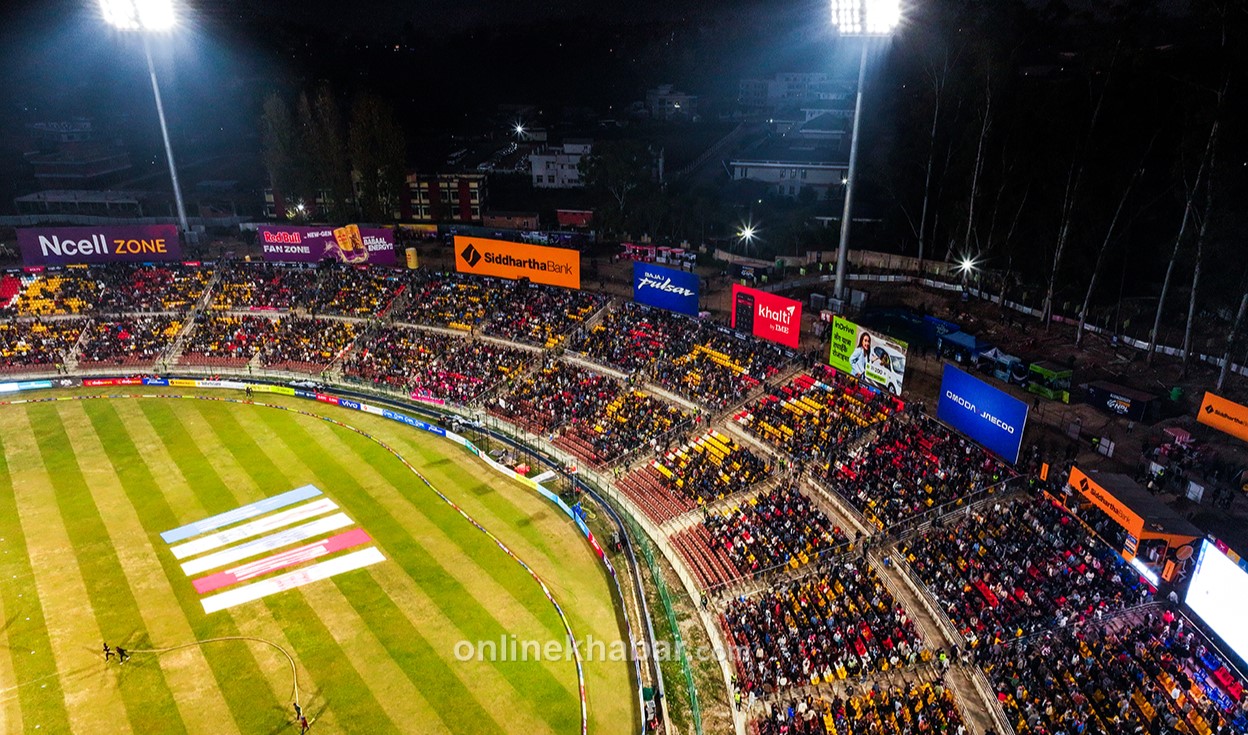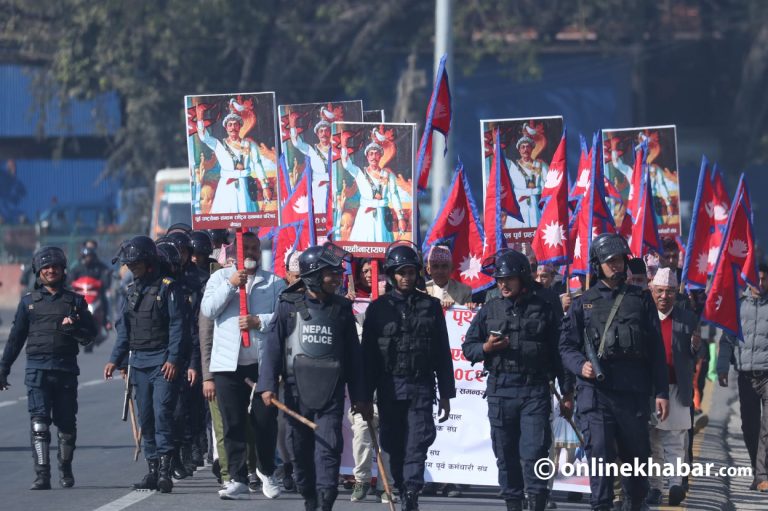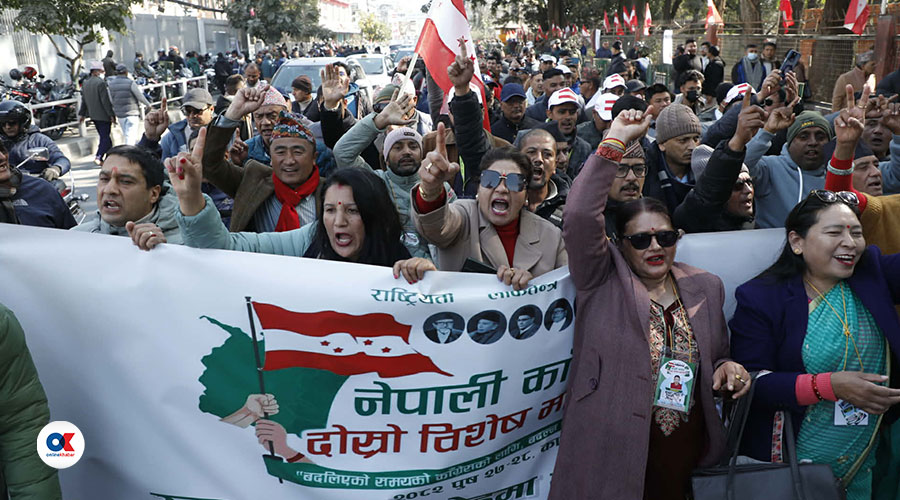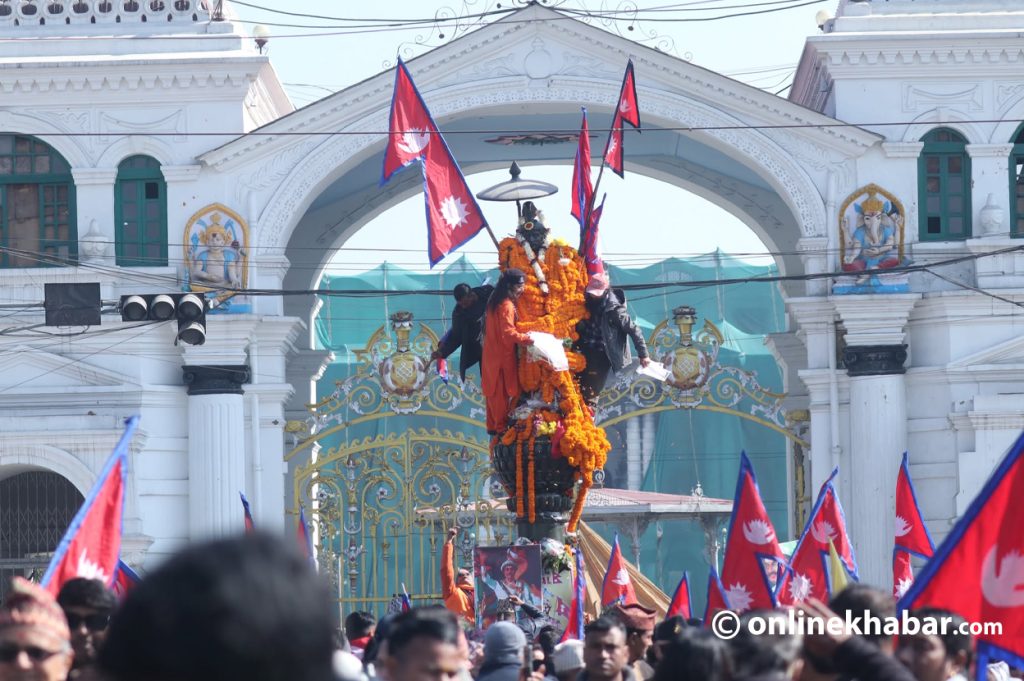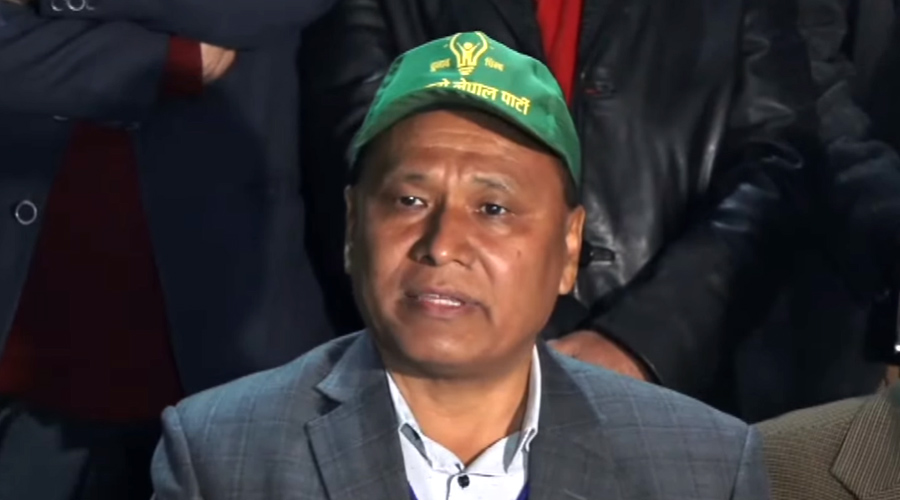
File
A preliminary report by a Chinese company has revealed a significant reserve of 112 billion cubic meters of natural gas in Jaljale of Bhairavi Rural Municipality, Dailekh. The news has sparked new hope in Nepal’s energy future, though the path to production and household delivery still involves several stages.
Simultaneously, discussions surrounding the iron ore deposit in Dhauwadi of East Nawalparasi have resurfaced. In this context, Prime Minister KP Sharma Oli has directed Industry, Commerce and Supplies Minister Damodar Bhandari, along with officials from the Department of Mines and Geology, to begin utilising the Dailekh gas within a year and start iron production from Dhauwadi by 2085 BS.
Here’s the excerpts of the interview with Minister Bhandari:
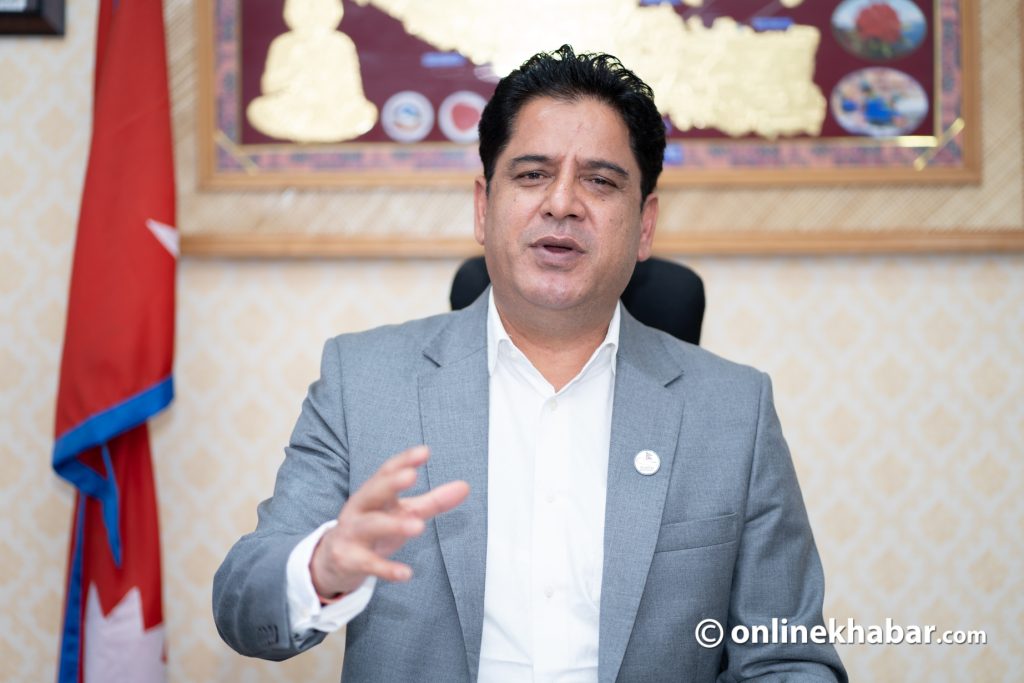
When will the public be able to use the gas from Dailekh?
The gas reserve was identified through drilling during exploration by the Chinese company, with a final report expected by December 2025. After that, test production will be conducted to confirm quality, productivity, storage potential, and market feasibility.
The process to carry out detailed feasibility studies in other regions is also underway with the financial and technical support of the Chinese government. Once complete, Nepal will move into the production and processing phase under the Petroleum Act 1983 and Regulations 1984.
Can the target of utilising the gas within a year be met?
Following the preliminary report, we briefed the Prime Minister, who instructed us to propose to the Chinese team that the work be expedited. The Chinese and Nepali experts believe there are no major technical hurdles, and the process—including production, testing, packaging, and distribution—can be completed with relatively low cost. Thus, the government is prioritising this project.
Is there political competition for credit over the gas discovery?
All levels of government and political parties have been supportive from the beginning. While different leaders have made attempts in the past, it was Prime Minister Oli who initiated the current exploration, yielding concrete results. Healthy competition in positive endeavors is welcome.
What has the government done so far, and what remains?
There is strong potential for methane gas, with an estimated reserve of 112 billion cubic meters. After test production, the country will proceed to commercial production and marketing. Additional wells have been discovered nearby, and we have already proposed an additional Rs 2.75 billion budget for further drilling.
We are working according to initial Nepal-China agreements, and discussions are ongoing at higher levels to ensure timely progress. Legal amendments will also be made if necessary, particularly to finalise the operational model.
Some link the gas discovery to national security. Do you agree?
The discovery significantly strengthens Nepal’s economy. There’s no national security threat from it. The government has divided the country into 10 exploration blocks. Dailekh is the first with successful results. We plan to expand exploration in areas including Jhapa, Morang, Sunsari, Palpa, Dang, and Dhangadhi with the same Chinese company.
How will this discovery impact Nepal’s economy?
Petroleum products, especially gas, are among Nepal’s largest imports—about Rs 230 billion annually. The government currently provides an annual subsidy of Rs 11 billion for household gas alone.
If we begin domestic production, it will reduce foreign currency outflow and generate employment. Industries that require large cylinders (400–450 kg) could benefit from cheaper and eco-friendly methane gas, increasing the industrial sector’s contribution to GDP. Mining currently contributes only 0.5%, but this could increase substantially.
How does the Dailekh gas compare to recent gas finds in Kathmandu?
Both gases are methane, but Kathmandu’s gas is found at 300–500 meters depth in small quantities, whereas Dailekh’s gas lies deeper—more than 4 km—and in much greater volume and quality, making it commercially viable.
Can the Dailekh gas be used directly, or does it need processing?
With over 90% methane, Dailekh gas still requires processing due to minor impurities. It can be used domestically, industrially, or as CNG/LNG through pipelines or transportable tanks after cooling.
What’s the estimated budget, and how will it be managed?
About Rs 2.25 billion has been spent so far. Test production will require another Rs 650 million. Detailed feasibility studies will determine further investment needs, but gas production is generally less complex and less expensive than oil.
Is the entire 112 billion cubic meters usable?
Not all underground gas is extractable. About 30% of the identified volume may be recoverable. Even that much could meet Nepal’s demand for the next 50 years. More reserves have been found in three other locations, possibly extending supply for centuries.
Which model will be adopted for operation?
Discussions are ongoing. Options include fully government-run, private-public partnership (PPP), or international bidding. The Petroleum Act needs clarification on operational models, and various agencies including the Department of Mines and Nepal Oil Corporation could play roles.
Does Nepal have the necessary skilled workforce? What about the market?
Skilled manpower may be limited in Nepal, but we can source it. Technologies and expertise are readily available from neighboring countries like India and China. Experts say infrastructure for storage and distribution will not be overly complex or expensive.
There’s sufficient domestic demand for methane gas. Only surplus amounts should be exported.
Where and how can this gas be used?
Methane can be used for cooking, industrial heating, power generation, and vehicle fuel. Globally, it’s used as CNG and LNG, especially in countries like India, China, Pakistan, Brazil, and Argentina. It is also more environmentally friendly than LPG, petrol, or diesel and is classified as green energy.
What’s the latest progress in the Dhauwadi iron project?
Plans for Dhauwadi and Durlunga iron mines have been submitted for approval. Risk assessment and core drilling are in the final stages. The area holds an estimated 99 million tons of ore with iron content ranging from 25% to 58% (average 35%).
Environmental and project planning studies are underway. However, the Public Procurement Act needs amendment to expedite the tender process, which otherwise could take up to a year.
Are you confident these resources will be used in our time?
Absolutely. With the pace we are moving, both Dailekh’s natural gas and Dhauwadi’s iron and steel will be harnessed during our tenure. I’m fully confident of that.






